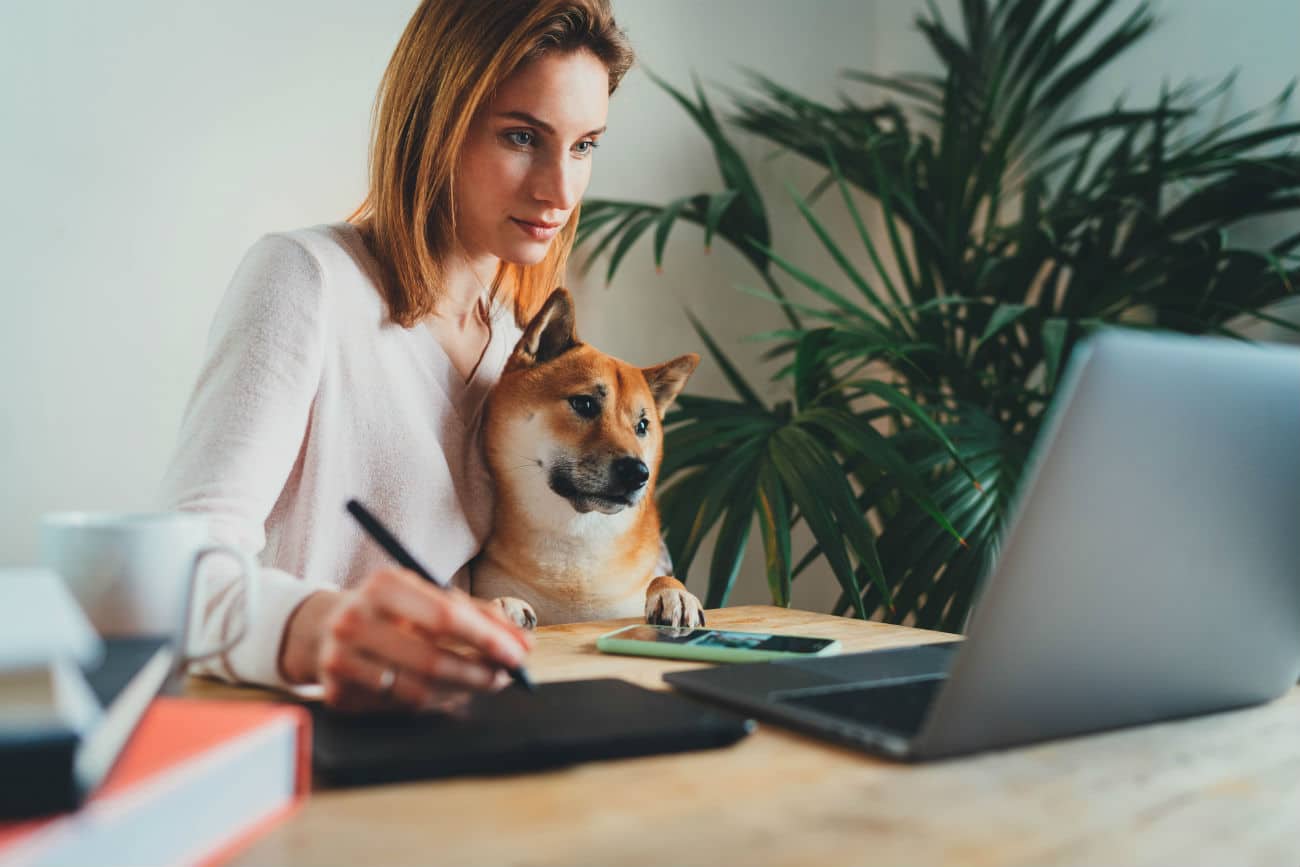The pandemic has forced many of our everyday routines to dramatically change – and this includes taking our dog to the vet.
A few months ago, we were driving to a vet office for our dog’s wellness check-ups, to pick up prescriptions and get yearly shots. But fast forward to today, with many offices practicing social distancing (meaning your pup must enter the facility by herself), some dog parents are turning to tele-medicine, or virtual vet visits, instead.
“People love it,” says Dr. Jonathan Levine, a veterinarian in Boston and resident vet advisor at Pawprint, a company that digitalizes pet medical records. “The added convenience of addressing concerns from home has taken on an outsized importance these days.”
But how do we know when to use tele-medicine and when to head directly to a clinic?
Related: The Top 6 Dog Parenting Mistakes, According to a Veterinarian
We took a deeper dive with Dr. Levine to address the most common questions around tele-medicine.
What exactly is tele-medicine
Tele-medicine lives under the tele-health umbrella, or ability to deliver health information remotely by way of technology. The American Veterinary Medical Association supports the approach, as long as it is done appropriately. Its biggest concern is that virtual appointments should be conducted only when an owner has already established a relationship with the veterinarian, meaning you can’t just call up any vet when you need to care for your dog. This stance is in line with most state guidelines.
When should you use tele-medicine
Dr. Levine explains that not all situations are appropriate for virtual vet visits. Some dog parents assume you can just jump online and talk to a veterinarian right away. Rarely is that the case. Rather, it can take be up to a few hours before you connect with your veterinarian. If your dog can’t wait, head to a clinic or emergency hospital. “The rule of thumb is that if you are ever worried about your pet’s condition and whether he or she is stable, then that needs to be addressed immediately at a clinic,” says Dr. Levine.
Virtual vet appointments can be really well suited for triaging cases (i.e. determining things to try at home vs. directing your pet to the appropriate clinic), as well as stable conditions such as skin issues, flare-ups of chronic issues or behavior changes, he adds.
How to prepare for your tele-medicine appointment
Just like when you go to an actual vet office, make sure you are prepared for your virtual session. Write out a list of questions you may have so you don’t miss anything. Also, if you need to show a certain behavior that your dog may not exhibit during the call (e.g. limping or difficulty settling in at night) record it beforehand, Dr. Levine suggests. And if possible, have a copy of your records. (Most vets should be able to access them at home, but it is better to be safe than sorry.)
How to make your tele-medicine appointment go off without a hitch
Make sure your wi-fi is working, you have tested the speakers and the lighting is good. If you are using a specific app (vs. a video conferencing platform, like Skype, Zoom or Google Hangouts), Dr. Levine recommends turning on notifications, so you don’t forget your appointment. “We’ve definitely experienced frustration both for the client and the vet if clients did not realize that the vet had been trying to engage or contact them.”
What to do during your tele-medicine appointment
Be patient. This is a unique experience for everyone involved: you, your dog and the veterinarian. Remember the thoroughness that occurs in a vet office will not happen through a Zoom call.
“We may not always get three-dimensional views, as the dogs may not cooperate,” says Dr. Levine. “It can be hard to get the full picture and evaluate everything.”
Related: What Do those Letters After Your Veterinarian’s Name Actually Mean?
You may need to play assistant and hold your dog, lift her tail, look into her ears,s how her underside or follow other instructions. Try to stay calm, so your dog remains relaxed – otherwise, it can be challenging for the vet.
Consider having treats as a motivation for following directions or a reward for a job well done. Again, it is important to have good lighting, and if possible, the ability to move your device (a phone may be more mobile than say a computer). But keep in mind, the video appointment can still be challenging.
“No matter how cooperative the patient or how thorough the history, telemedicine can never fully replace examining a pet in person, says Dr. Levine.
What sort of limitations are there with tele-medicine
While seeing a vet in the comfort of your own home is nice, there are some drawbacks. For one, your dog can’t actually be physically examined by the doctor or receive that personal touch that happens at an office.
Also, Levine points out, your dog may need to wait to receive necessary medications. Because dogs can be prescribed some types of human medication, veterinarians can call them into pharmacists at stores, like CVS or Walgreens. However, if your dog needs a medication which is not carried by these pharmacies, coordinating purchase online can be difficult and can take days before it arrives.
Lastly, regulations for tele-vet appointments vary state by state. Almost all states require you to have some sort of relationship with the veterinarian (e.g. seen the vet in the last year) to have a tele-medicine appointment, with the exception if it is an emergency situation. (Check with your state licensing board if need additional assistance)
While tele-medicine for vets is here to stay and likely will continue to grow after the pandemic, Dr. Levine, urges people to be understanding.
“We are adjusting to this new normal along with you,” he says.
Related: How to Prepare Your Dog Now to Prevent Separation Anxiety After Lockdown Ends
This article has been reviewed by Dr. Levine


















